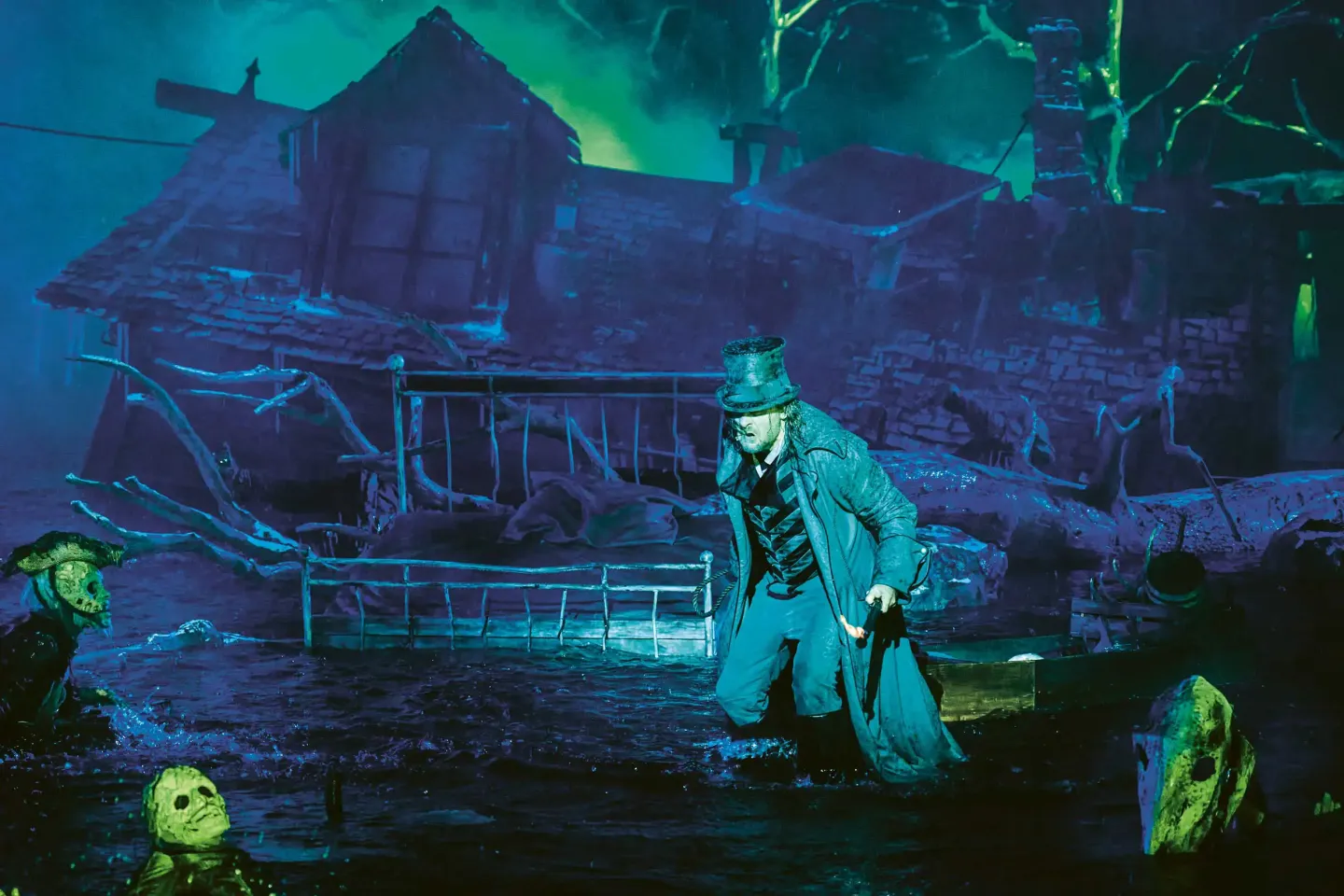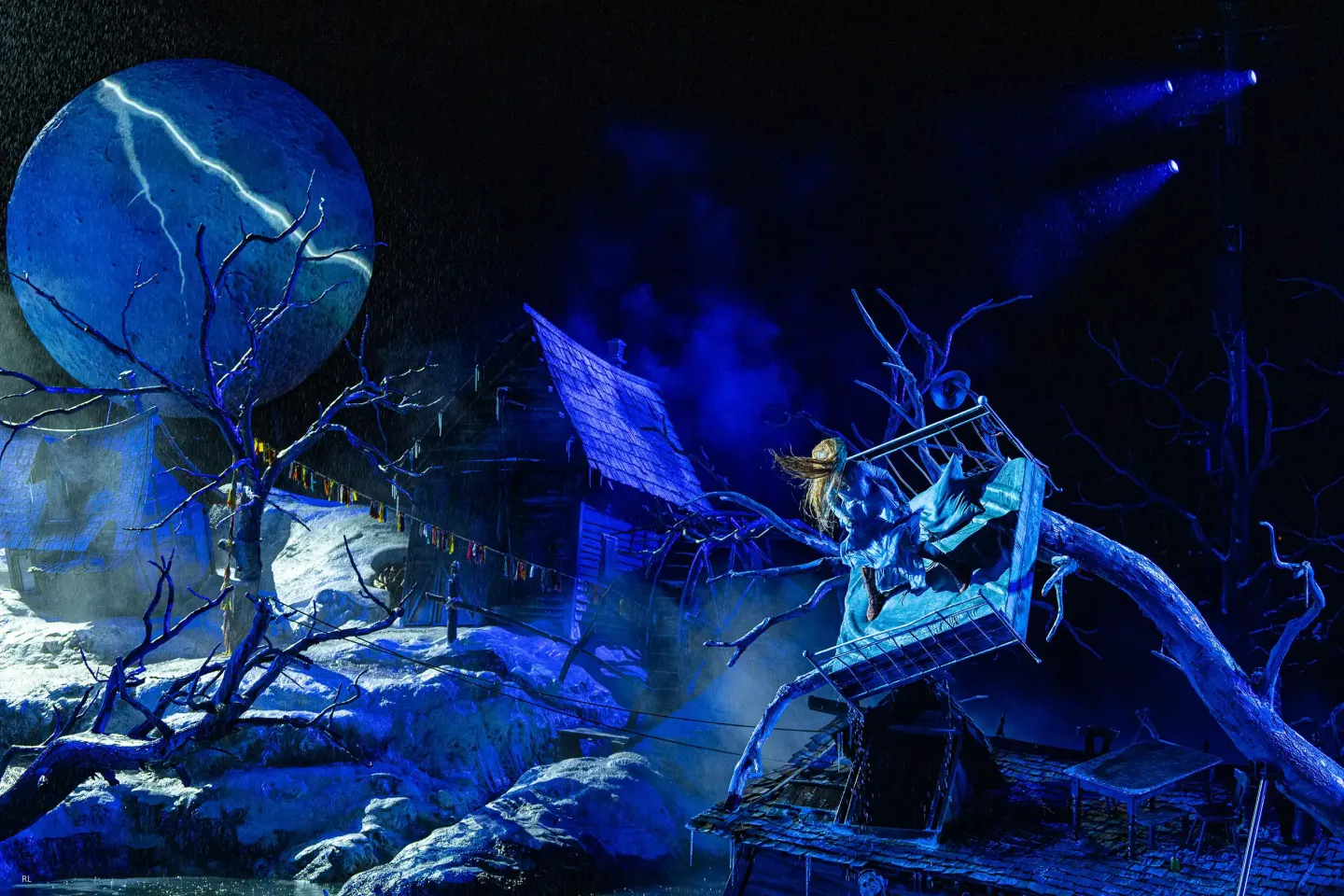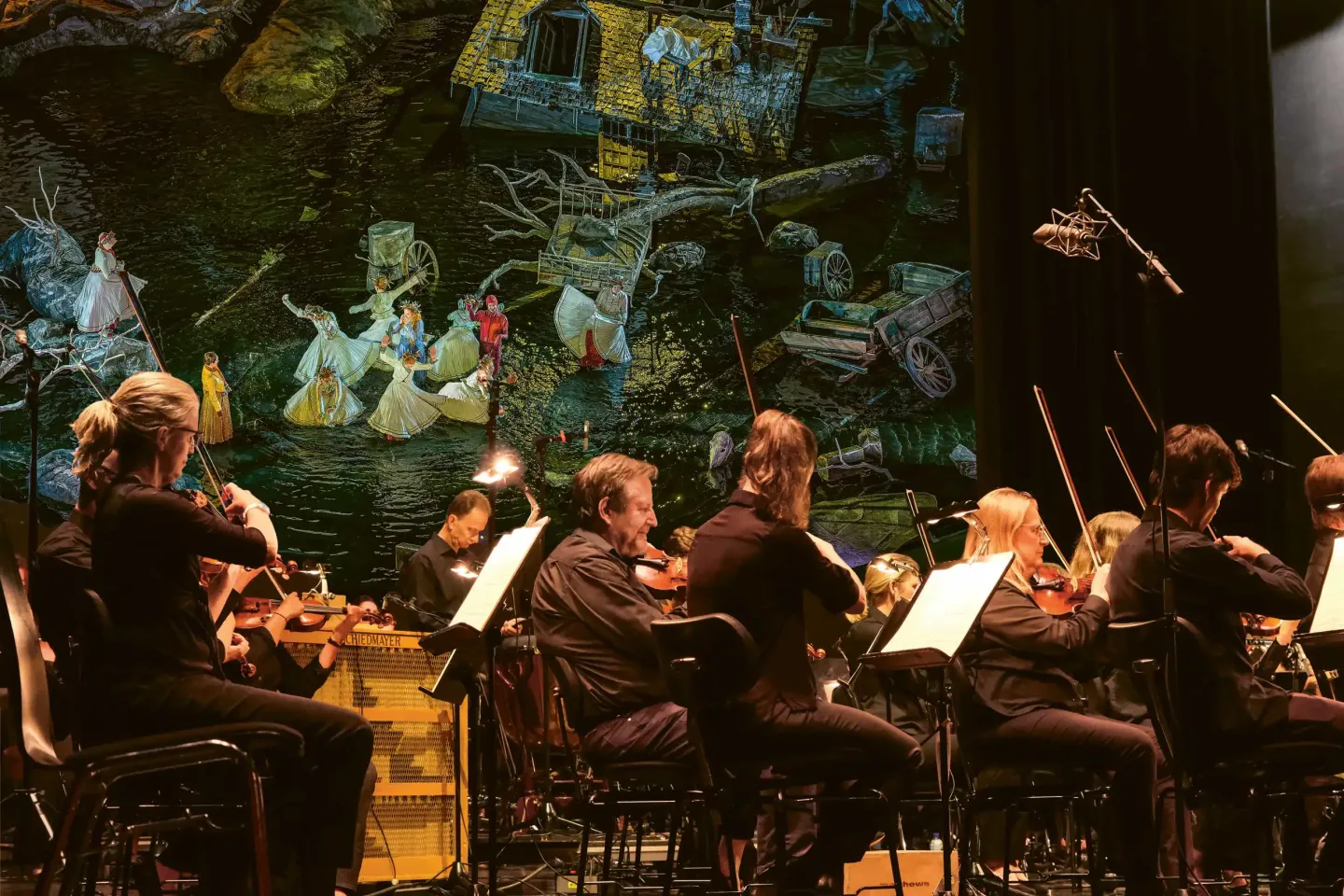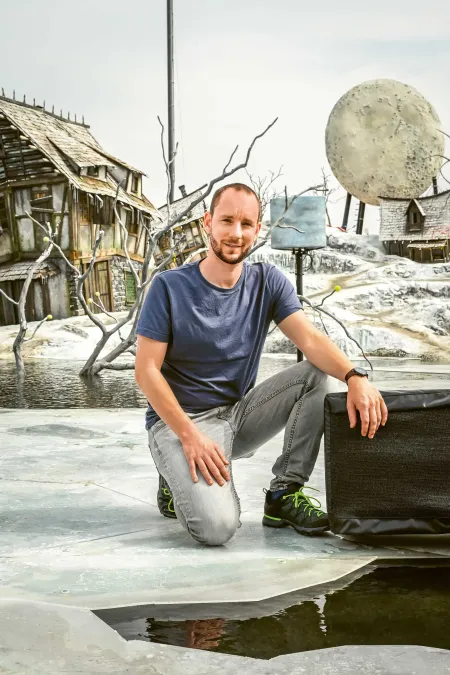Text: Kathrin Grabher
The text was published in edition 3 (06/25).
Reading time 4 Min.
Ghosts at the Push of a Button
Devils or not – if you want to give goosebumps to around 7,000 people every night in the idyllic setting of Bregenz Bay, you’ll need help. Because when it comes to lightning and thunder, vivid colors and fog, it’s not dark forces ruling the Seebühne, but the engineers of the sound and lighting departments.
Roughly 300 people work on and behind the stage to ensure that each performance of Der Freischütz runs smoothly. One of them is Clemens Wannemacher, head of sound at the Bregenzer Festspiele. The Lower Austrian native has been working for the summer festival since 2020. Der Freischütz is his third production on the Seebühne. Directed and designed by Philipp Stölzl with a strong sense of spectacle, this Weber opera is not only a visually stunning production– it also takes an extraordinary approach to sound design, as Wannemacher explains:
“Philipp brought his extensive experience as a film director into Der Freischütz, which includes many spoken scenes. In film, you often have multiple layers of sound happening simultaneously: the dialogue – of course the most important –, a soundscape that creates atmosphere, and an ‘underscore,’ that is, music beneath the dialogue that adds to the emotional tone of the scene. Depending on the moment, these layers shift in dominance – and that’s exactly what Philipp envisioned for Der Freischütz.”

Designed to give you chills
This complex sound design is made possible by the Seebühne’s specialized sound system: Using around 90 microphones in total, the engineers capture the various sound sources and play them back – perfectly mixed – through hundreds of loudspeakers in the auditorium. “We transmit the orchestra and choir from the Festspielhaus,” explains Wannemacher.” The singers, actors, and onstage musicians are also amplified with microphones. And then we have a host of sound effects: wind rustling through the trees, rumbling thunder, birdsong… everything you associate with a harsh, slightly eerie winter.” In the control center of the sound department, one device sits next to the other. Using faders and buttons, moods can be created during the performance, wolves summoned, or crows sent flying across the Bregenz night. In addition, there is a wide range of scene-specific sounds, such as the crack of Kaspar’s whip or the chime of the tower clock

Gewittersturm im Freischütz-Dorf: Erst der richtige Ton macht die Szene komplett.
Where do these effects come from – can you buy thunder like you buy loudspeakers? “To a certain extent, you could,” says Wannemacher. “But on Philipp Stölzl’s recommendation, we brought in sound designer Jan Petzold, who has worked on many of his films.” Petzold creates the crows and wolves? Wannemacher nods: “He has everything. And what he doesn’t have, he creates.” Petzold spent two weeks in his studio in Cologne crafting the perfect soundscapes for Der Freischütz. “To create a realistic picture, you layer several sounds in sound design,” explains Wannemacher. For the ticking hands of the church clock, Petzold searched his library for gears of various sizes, small hammers striking metal, and creaking wood. “Each individual sound by itself is mechanical and sterile. It is only this combination that produces a convincing, full effect,” says the head of sound.
Petzold then came to Bregenz for another two weeks to adapt the prepared effects to the conditions at the lake, working with Wannemacher and his team. After all, what sounds good in the studio doesn’t necessarily work in an open-air venue. “If you’re in the studio and find yourself getting bored because a bird flutters around you very slowly for 15 seconds, only audible from the right side – that same movement speed actually works quite well on a lake stage that’s 80 meters wide,” says Wannebacher by way of example.

Dirigent:in und Orchester können das Geschehen auf der Seebühne per Videoübertragung verfolgen.
Structures Made of Sound
The Seebühne’s sound system is a sophisticated masterpiece of so-called point-source-speakers – individually controllable loudspeakers. These create a realistic spatial simulation in the open air and compensate – perfectly aligned – for the lack of walls and ceilings that would normally provide good acoustics in an opera house.
While Petzold is an expert in designing and mixing sound, Wannemacher’s specialty is theatrical sound reinforcement and acoustic simulation. Together with Alwin Bösch – a veteran of the Bregenz sound department – and external experts, he took the renowned Bregenz directional hearing system BOA (Bregenz Open Acoustics) to a new level in 2021.
“My idea was to acoustically replicate the Großer Saal at the Festspielhaus out on the lake,” says Wannemacher. His team places around 60 microphones in the hall for the orchestra transmission. Some hang from the ceiling – capturing the overall sound image and played back through elevated loudspeakers on the lake stage. Others are placed between the seats on the floor. These recordings are heard through the 270 speakers mounted under the audience seats on the grandstand. “This way, we recreate the hall’s soundscape in full and achieve a natural spatial sound,” explains the sound engineer.
The audience doesn’t just follow the action on stage with their eyes; they experience it live with their ears as well. Whether Ännchen and Agathe are joking outside the tavern or Samiel is trudging through the barren landscape – each scene is matched with loudspeakers that transmit the sound from the location of the action. This allows even those in the last row to locate precisely where each performer is speaking or singing from.

A Delicate Touch on the Fader
In addition to all the technological intricacies and installations, the sound department also handles the task most people would first associate with it: volume control. Where in an opera house, musicians and conductors alone determine volume levels, acoustic amplification comes into play on the Seebühne. How does the orchestra handle that? “It can be a fantastic artistic tool. You could make a loudly playing orchestra sound very soft – or the other way around,” says Wannemacher. We can nudge the fader up a little – or bring it down if things get a bit too much. Or we might give the solo instruments a little more presence.”
Overall, though, his team stays in the background when it comes to this, as he puts it: “The conductors have the skill to balance the music in a way that makes it sound cohesive in the hall. Our job is really just to carry that sound outside.” Fine-tuning on the grand stage – with a feel for its unique characteristics: “Only when a motorboat passes by, or the wind picks up and you hear waves crashing against the shoreline wall – only then do we slightly raise the volume.” Nothing should break the audience’s sense of enchantment.


